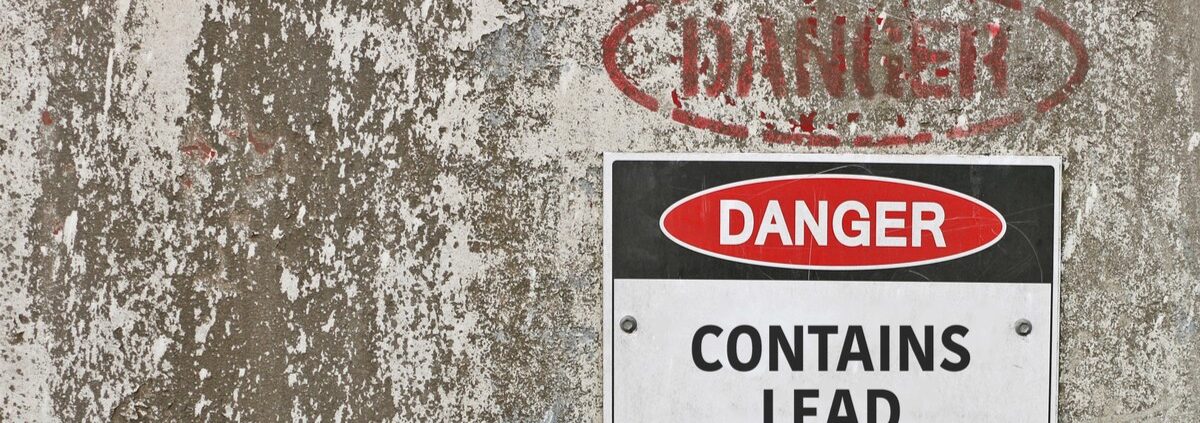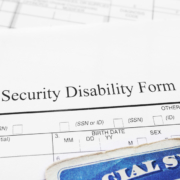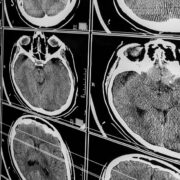After 5-month Delay, NYC Health Department Adopts new Federal Rules on Childhood Lead Exposure
By Christopher Werth, Gothamist
A prick of the fingertip is a rite of passage for most New York children. During their first six years of life, state law mandates that their blood must be regularly screened for lead exposure.
Widely used in paint, plumbing and gasoline in centuries past, lead is a neurotoxin that can cause irreversible learning impairments and behavioral problems. The Centers for Disease Control and Prevention has determined that no amount of exposure is safe. But one of the lingering debates within public health circles has asked what level should merit a response from a pediatrician or a health department.
In 2019, the City Council passed legislation requiring the city’s health department to follow any changes in what the CDC calls its “blood lead reference value” — essentially an indicator for when local health departments should intervene to provide treatment and cut off the source of exposure. That shift came in October, when the CDC lowered its reference value from 5 micrograms per deciliter of blood to 3.5 micrograms.
But New York City officials did not immediately adopt the new guidance, despite the legal requirement from the City Council. After nearly five months of public pressure by public health advocates, the New York City Health Department moved to adopt the CDC’s new reference level of 3.5 micrograms, according to a department spokesperson.
Any test results at or above that level will now automatically trigger an investigation by the department. According to data obtained by Gothamist via a Freedom Of Information Law request, the shift in policy means hundreds of additional children will now be eligible for city-funded services each year, amounting to a 50% increase in the city’s annual caseloads.
The city’s adoption of the new lead rules is a move that many public health advocates said they were concerned wouldn’t happen, at least anytime soon. Last month, a coalition of 10 advocates and organizations petitioned the city’s Board of Health to adopt the new standard.
“What the Council did was to add a provision that would essentially eliminate the need for the Council coming back and passing new legislation every time the CDC changed its reference level,” said Matthew Chachere, the attorney who filed the petition on behalf of the New York City Coalition to End Lead Poisoning and others.
“It took five months, but I’m glad [the health department] did it. Unfortunately, it took a petition from advocates to get them to act on it,” he said.
One of the lingering debates within public health circles is what level should merit a response from a pediatrician or a health department. By the time lead paint was fully banned and leaded gasoline began to be phased out in the United States in the 1970s, the CDC’s so-called “level of concern” was 30 micrograms per deciliter — a staggering number by current standards.
Those days are long gone, given what researchers have shown about the cognitive effects of even relatively low levels of exposure. The new shift in the lead limits — 5 micrograms to 3.5 micrograms — might seem small, but it would create a significant workload for department nurses and investigators, adding hundreds of more children to their docket of cases each year.
Dr. Morri Markowitz, the director of the Montefiore’s Lead Poisoning Treatment and Prevention Program in the Bronx, questioned whether the city has the resources to handle such a large expansion of cases.
“Do they really have the capability? Because the numbers are going to increase a lot,” Markowitz said. “Adopting [the CDC guidance] and acting on it aren’t necessarily exactly the same thing.”
Making sense of the city’s new lead action level
When Lizzie O’Leary received her son Sam’s lead test result last September, it was a couple of months after his first birthday. A nurse at his pediatrician’s office in Park Slope, Brooklyn got in touch to say his blood-lead level was 4 micrograms — a number the nurse described as on the “high side of normal,” as O’Leary recalled, and one that now falls within the city’s new action zone.
“I immediately freaked out,” said O’Leary, who is the host of the podcast “What Next: TBD” at Slate.
“Anything that could compromise your kid is scary,” she said. “Then I went into reporter mode and went about finding the source of lead.”
She shelled out $18 on an at-home test for her drinking water because, considering how anxious she was, the free testing kits offered by the city would take too long to arrive. She also paid a certified inspector nearly $1,000 to collect dust samples in her apartment and in the common areas of her building to check for old, deteriorating lead paint. That’s the most common source of exposure in New York City, according to the health department.
Her water and her apartment were fine, but the results from the carpet in the building’s lobby showed high levels of lead.
“We had been letting Sam crawl up the first floor of [the] stairs because it was fun for him. We stopped doing that,” O’Leary said. “We do not let him walk in the lobby. We do not let him get down. He’s 20 months old. He does not like that, but there’s no way I’m letting him be on that carpet.”
But O’Leary said she grew even more alarmed a month or so after she got Sam’s test result — when the CDC lowered its reference value last autumn to 3.5 micrograms. In her mind, it meant Sam was now classified as being even more at risk.
“I was sitting there thinking,” O’Leary recalled, “did I react fast enough?”
Sam’s pediatrician, Dr. Philippa Gordon, said feelings of guilt are increasingly common among parents whose children are exposed to lead — even in low-level cases that she described as “totally manageable.”
“It’s very hard because the way people think about being parents now is that they’re responsible for curating their child’s experience,” she said. “I don’t know what she could have done differently. She did everything we said to do.”
Dr. Gordon said pediatricians and health officials need to be careful about the way they talk with parents about the federal guidance that the city is now following.
“We’re going to have to frame a way of speaking about it that lets them know that it’s not that the level of toxicity that’s changed, but the level of control that we’re willing to put over the sources of lead,” she said.
How the new action level was determined
In 2012, the CDC broke from a long-held practice of trying (unsuccessfully) to calculate an acceptable level of lead that causes little to no harm. That’s because, in recent decades, researchers using large, population-based studies that followed children over time have found cognitive and behavioral effects at ever-decreasing amounts, including loss of IQ in some children with blood-lead levels in the low single digits.
In place of the old system, the CDC adopted a new, epidemiological approach that focuses on identifying the children most at risk. To do that, the agency turned to one the largest, longest-running collections of health data in the country: the National Health & Nutritional Examination Survey (affectionately known as NHANES and pronounced “en-HANES” within public health circles). It includes the blood-lead test results of thousands of American children.
Under this new model, the CDC determined that no amount of lead exposure is safe, and levels of “concern” were replaced with an actionable benchmark that identifies the kids with the highest lead exposure compared to the rest of the population. The CDC then encouraged local health departments to target their efforts at helping those children, largely by testing a child’s home for old lead paint and for lead in drinking water and cutting off the source to prevent further exposure.
“In medicine, we use the outliers to help us determine what we’re going to do in terms of our health assessment and interventions,” said Dr. Markowitz.
A decade ago, when the CDC’s new method was first introduced, 97.5% of kids aged 5 and under in the NHANES data tested below 5 micrograms. The remaining 2.5% — or roughly half a million children — tested above that level, which is where the CDC set its target at the time.
But lead exposure cases are a moving target.
In New York City alone, the number of children with elevated blood-lead levels has dropped over 90% since 2005, according to city data.
Nationally — despite government blunders like Flint, Michigan, Newark, New Jersey, and other hotspots, such as Buffalo, New York — the overall decline from perilously-high lead levels in past decades is widely seen as a public health success story.
To account for continuing decreases in lead exposure, the CDC had always planned to regularly update its blood lead reference value based on new data.
Today, the latest round of NHANES test results show blood-lead levels among the wider population have shifted yet again. Now, 97.5% of kids aged 5 and under fall below the 3.5- microgram limit recommended by the CDC late last year.
But the change will result in increased caseloads for health departments that adopt the agency’s new guidance.
What happens when caseloads increase 50%
Even members of the CDC’s lead advisory committee have raised concerns about how to implement the new measure and what it means for already overburdened health departments facing a wide array of public health demands, including COVID-19.
To determine how the city’s caseloads could be affected, Gothamist obtained data via a Freedom Of Information Law request on the number of children who tested between the new guidance level of 3.5 micrograms and the city’s old action level of 5 micrograms.
Those figures show that had the new action level been implemented citywide in October 2021, when the CDC made its change, the shift would have added about 400 kids to New York City’s list of children considered to have elevated blood-lead levels in 2021. If the rule had applied retrospectively to all of last year, the caseload increase would have been 1,725 children.
The number of kids between the old and new action level would be most pronounced in Brooklyn, Queens, and the Bronx, in descending order.
The total number of kids with elevated lead levels in 2021, however, has not been made publicly available by the city’s health department. A department spokesperson, Michael Lanza, did not answer questions as to why. The city typically posts quarterly updates on the number of children with blood-lead levels above 5 micrograms.
But the health department said it expects the change in policy to increase caseloads by 50%, suggesting that 2021 totals likely stood at roughly 3,400 children.
Therefore, the addition of 1,725 more children with lead levels between the new and old action levels would have amounted to just over 5,000 kids with lead exposure that would have qualified for intervention from the health department last year — a caseload not seen since 2017.
What the new lead requirements mean for building owners and city dwellers
At a recent follow-up visit earlier this month, O’Leary’s son Sam tested at 2 micrograms — half of what it was in September of last year.
“Good news,” she wrote in an email to Gothamist shortly after receiving the results. “I want to try to push it further, obviously, but that means that the steps we are taking are working.”
Dr. Gordon said the new action level will catch cases of lead exposure sooner and force more landlords and building managers to fix dangerous lead-paint violations.
For families with children who qualify under the expanded action level, New York City’s adoption of the CDC’s new guidance means a greater access to resources. The health department’s lead poisoning and prevention program assigns nurses to follow up on cases of lead exposure until a child’s lead levels go down. It also conducts free home inspections for lead paint using specialized X-ray fluorescence technology (XRF) that’s costly when paid out of pocket.
O’Leary is currently working with her neighbors to XRF test all of the apartments in their building for $1,200. Under the new action level of 3.5 micrograms, someone like her would have had their apartment tested by the health department as a matter of protocol after Sam’s initial lead test.
The health commissioner also has the power to order landlords to conduct abatement work when lead-paint violations are discovered. If a landlord fails to comply, the city can bring in its own contractor and stick the landlord with the bill.
But the city’s health department has a history of being slow to comply with CDC advisories on lead. In 2018, WNYC reported that — citing budget concerns — Mayor Bill de Blasio’s administration was still using outdated action levels of 10 and 15 micrograms, resulting in thousands of children who went uncounted.
Later that same year, the administration adopted what was then the CDC’s current standard of 5 micrograms, hiring 36 additional inspectors and nine new nurses (up from 15 and three, respectively) to take on the new cases. And in 2019, the City Council passed the legislation that requires the city to follow all future changes in CDC guidance.
The health department said it has the funding it needs to take on the additional cases that are coming. But Dr. Markowitz of Montefiore Hospital questioned whether children who test in the lower ranges of the new action benchmark will receive the same level of intervention as children with higher amounts of lead exposure.
“What’s the content of the investigation? Will they have the personnel to send a sanitarian out to inspect the property or is it going to be phone management – we’re going to give you advice for what to do, and now you’re on your own?” Dr. Markowitz asked. “If they’re estimating that it’s going to be over 1,700 kids, do they have 50% more personnel to be able to do it or were their personnel underworking? Or are they going to adapt what they do per case or for specific cases, especially the low-end cases?”
The health department did not respond to questions about what interventions for lower cases of exposure will entail. A health department employee with knowledge of caseloads, who did not want to be named because they weren’t authorized to speak to the press, said a trickle of new cases at the new action level have already started to be added to staff workloads.












Leave a Reply
Want to join the discussion?Feel free to contribute!